Bibimbap

Hanok Village Bibimbap
A recipe created by a mother with 50 years of know-how
represents the authentic flavor of Jeonju
-

Health Benefits of Jeonju Bibimbap
Locally fermented food represents the well-balanced, nutritional, and
low-calorie diet of Jeonju. -

Dedication of Jeonju -
A UNESCO Creative CityWhere tradition and valuable moments are united in harmony. Jeonju bibimbap is considered one of the top three dishes of the Joseon Dynasty.
-

Jeonju Bibimbap from the Hanok Village
Representative of South KoreaOriginating from the Five Elements Theory and their Yin-Yang harmony, Jeonju boasts some of the most authentic Korean flavors and foods.
500 years, Time shared with Bibimbap
50 years, Time together with Us
The Value of ‘Jeonju Bibimbap'
-
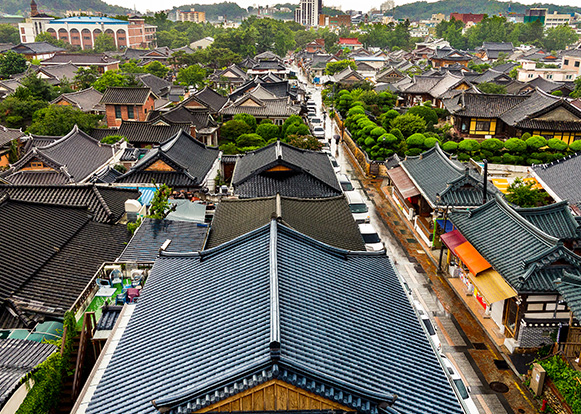
Jeonju Hanok Village
Jeonju’s geographic conditions are divine and is a great location where
richness and sincerity are harmonized together to create the perfect flavor. -
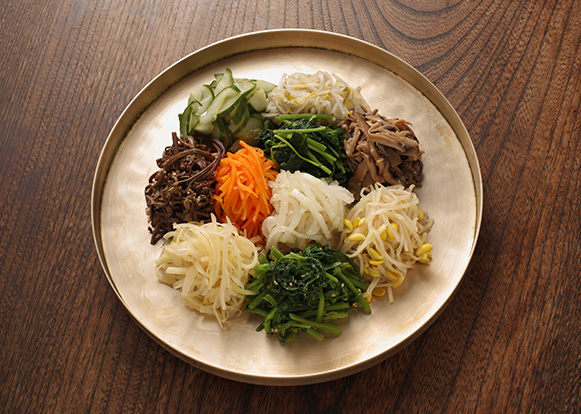
Jeonju Bibimbap
Jeonju bibimbap is one of the three great dishes of the Joseon Dynasty.
A bowl of bibimbap embodies perfect balance and nutrition. -
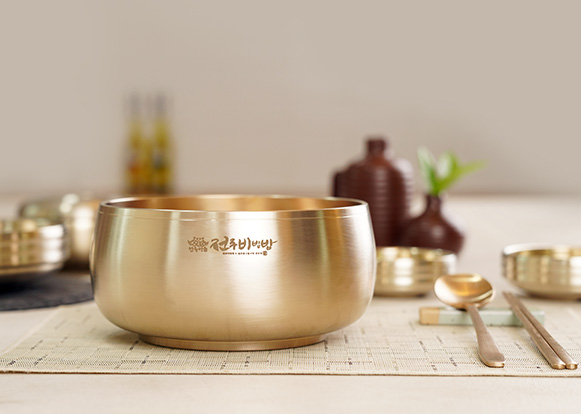
Brassware Bowl
Brassware helps preserve nutrients, including vitamins, in various
vegetables, thus maintaining the original taste. -
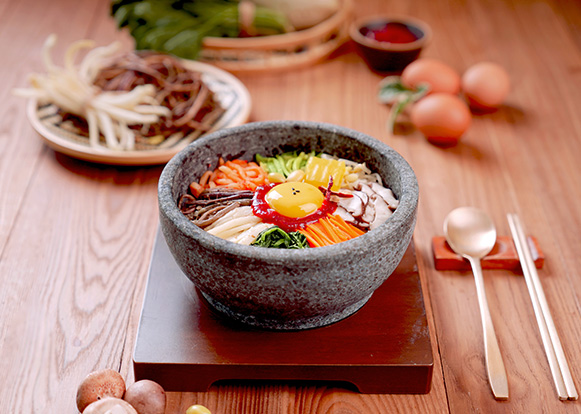
Dolsot (Stone Pot)
Dolsot bibimbap preserves warmth, retaining nutrients and memories.
'Jeonju Bibimbap' Brand Story
The light was always on in my mother’s small restaurant, located in a small alleyway.
The entrance of the narrow alleyway, where mother's small restaurant always had its lights on, welcomed people with the savory aroma of
freshly roasted vegetables. Starting with a base of warm rice, beautifully garnished greens were added, and finally, an egg yolk and red
pepper paste. The dish is topped off with a hint of sesame oil, which brings the different elements of the dish together.
While helping my busy mother, oblivious to how quickly time passed, it wasn’t long till we were bidding farewell to our last customers.
With the simmering sounds in our ears, my mother, brother, and I caught our breath as we prepared large bowls. Mixing in all sorts of greens, red pepper paste, and sesame oil while stirring briskly, the dull clinking of spoons against the bowls added warmth and rhythm to our hectic day, bringing us a sense of peace and warmth.
During tough times, the tastes and warmth linger in my thoughts, remaining unforgettable even with the passage of time. They guided me to the old notebook filled with my mother's efforts and dedication, where I began following in her footsteps as I started learning.
To provide the warm scent of bibimbap anytime and anywhere, I have learned the process of choosing fresh vegetables, cooking, and preparing this dish step by step.
We aspire to become a brand that conveys warm comfort in every detail. We are dedicated to sharing the comforting warmth of bibimbap with as many people as possible.
-
Jeonju Bibimbap,
Representative KoreaSymbolizing Jeonju’s traditional Korean Hanok village.
Expressing the color of roofing tiles using obangsaek-colored ingredients representing the Yin-Yang and Five Elements theory.
The creative city expression of food from a traditional Korean village.
-
Leading the way in Representing
Korea's K-FoodThe most authentic Korean flavors and cuisine.
Jeonju's traditional dishes, Jeonju bibimbap and bean sprout and rice soup
Considered the top three dishes of the Joseon Dynasty: Jeonju Bibimbap, Pyeongyang Cold Buckwheat Noodles, and Gaeseong-style Soup
Balanced nutritional meals
Low-calorie diet food
The Great Five-ColoredIngredients Harmonizer, (Red-pepper paste)
-
Herbs (Seasoned Vegetables)
When various types of seasoned vegetables, each with its own
unique flavors, are mixed with spicy gochujang sauce, their
distinct characteristics blend smoothly to create bibimbap. -
Gochujang
Gochujang plays a significant role in harmonizing
the flavors of the various ingredients, enabling them
to blend perfectly together in a single bowl.
Bibimbap filled with mother's wisdom

Bibimbap, infused with the wisdom of a mother considering her ancestors, continues to deliver its warmth even today. As time passes, rediscover the deeply nostalgic taste at
"Hanok Village Bibimbap."
-
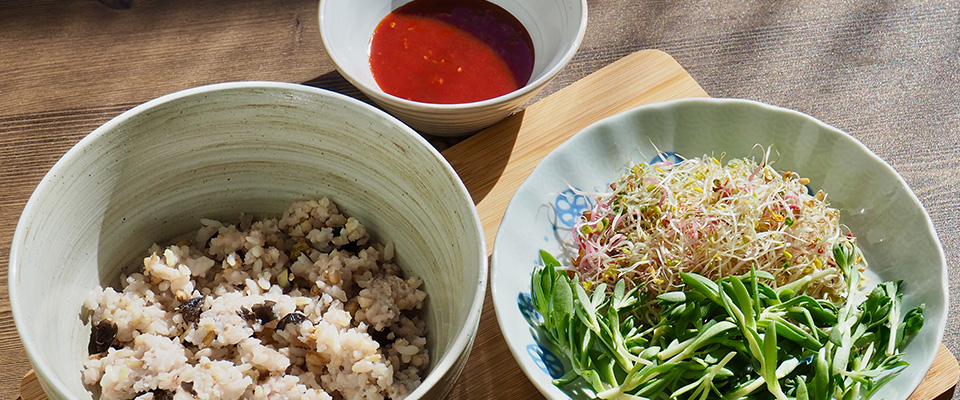
Making bibimbap at home
-
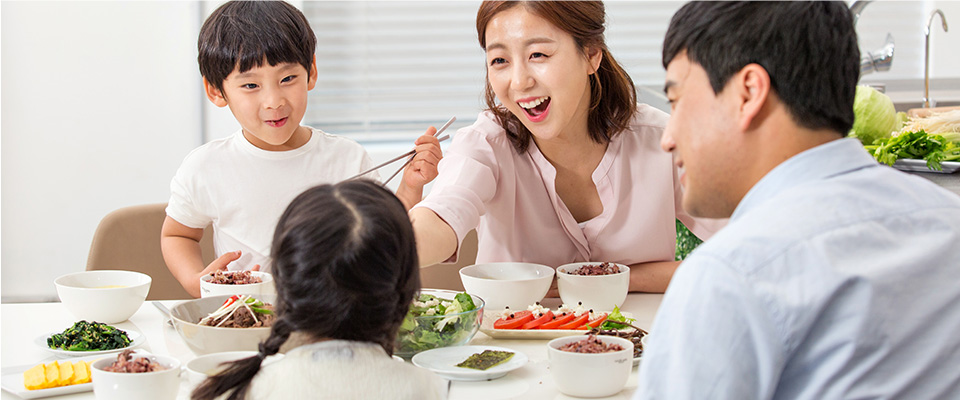
and enjoying it with family.
-
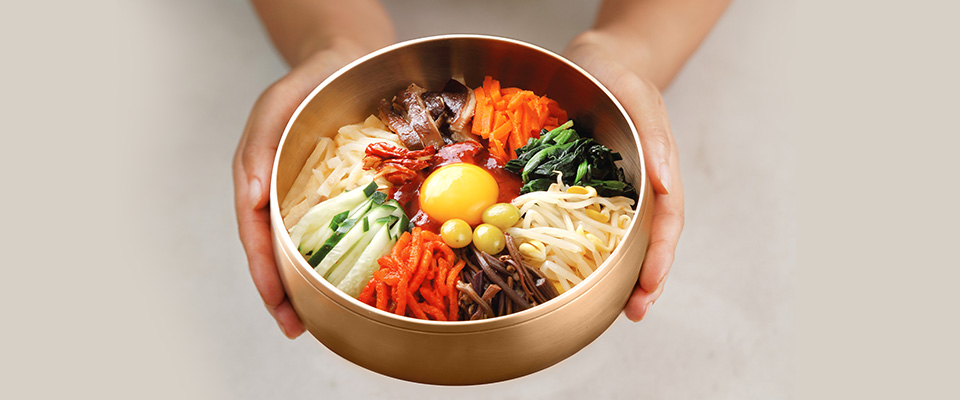
Bibimbap preserves Korean traditions and values
Introducing the representative Korean cuisine infused
with Korean style! Jeonju Bibimbap.
Korean Style
“Korean style” refers to our traditional way of life, encompassing hanbok (clothing), hansik (food), hanok (housing), as well as rites and traditional cultural elements such as hanji (traditional Korean paper), Hangul (Korean alphabet), and traditional music (gugak).
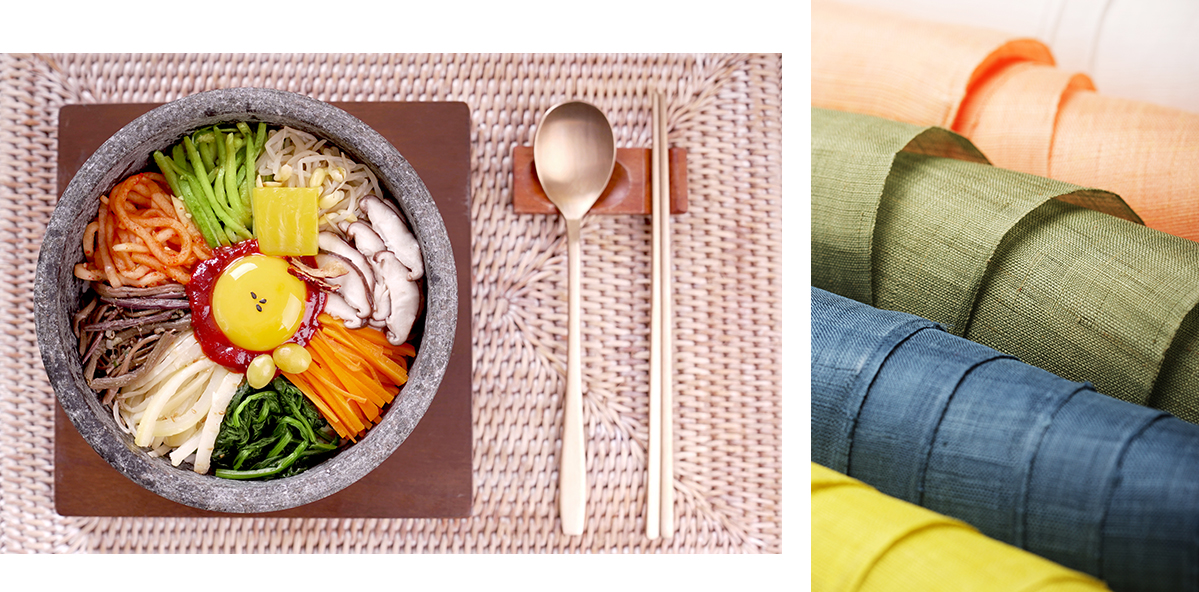
Jeonju Bibimbap and Korean Food
Representing Korean cuisine with a touch of Korean style ㅡ Jeonju bibimbap!
The word “bibida” (to mix) goes beyond simply “mixing” various ingredients; it embodies the harmony that is created.
Experience the taste, elegance, and value of Jeonju bibimbap that transcends Korea to influence the world.

Jeonju Bibimbap and Korean Traditional House
There are many different types of Hanok (traditional Korean houses), such as tiled-roof houses, thatched-roof houses, shingled-roof houses,
and log cabins. They all share the common principle of respecting nature, harmonizing with it, and sourcing materials from it.
Similarly, Jeonju bibimbap is born from fresh ingredients that grow in harmony with nature, resulting in a nutritious bowl of food.







